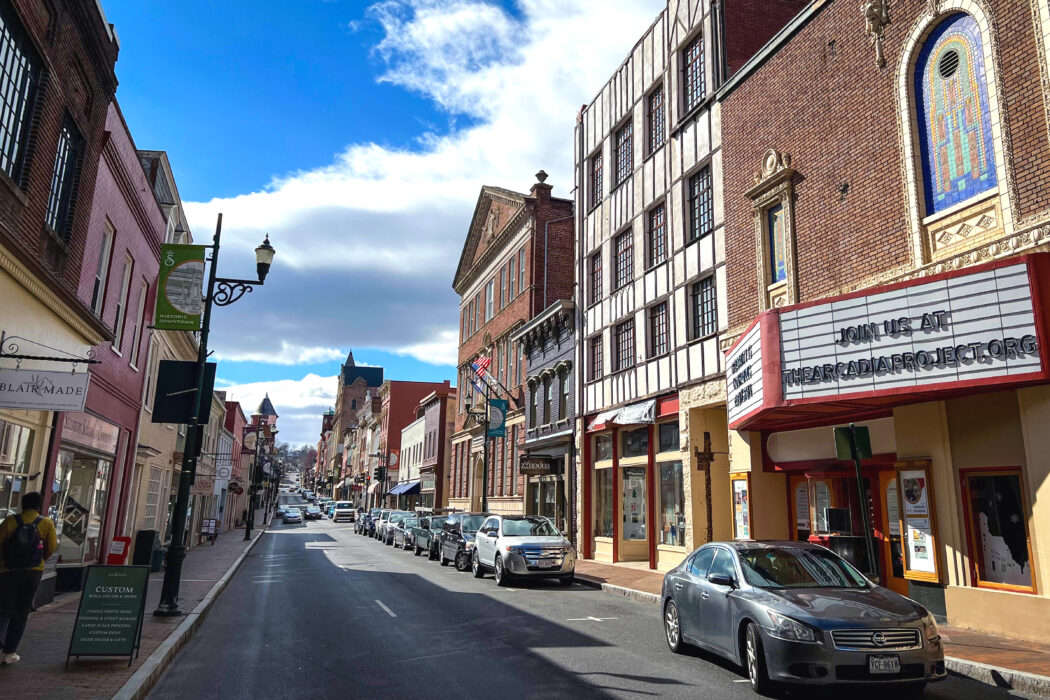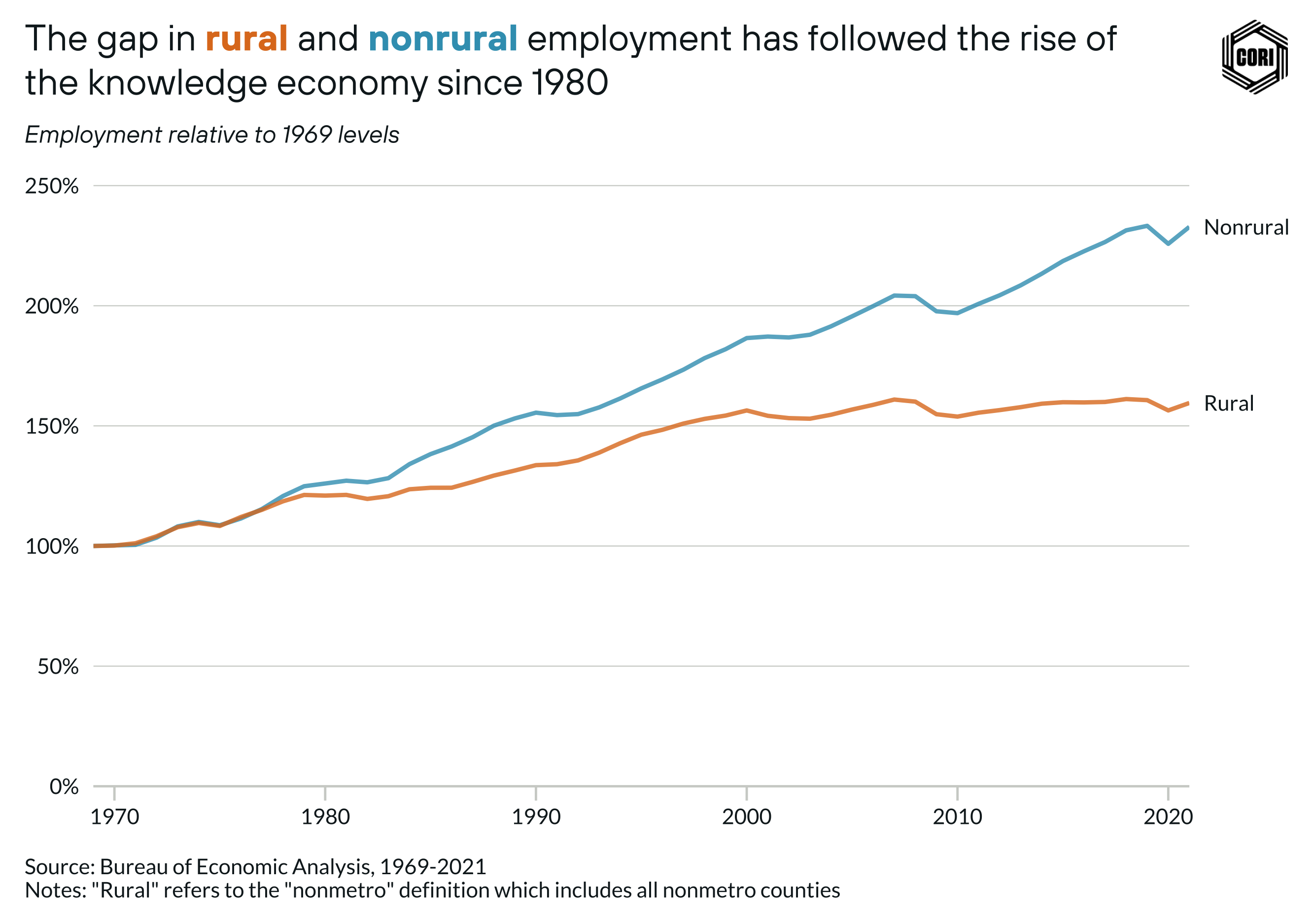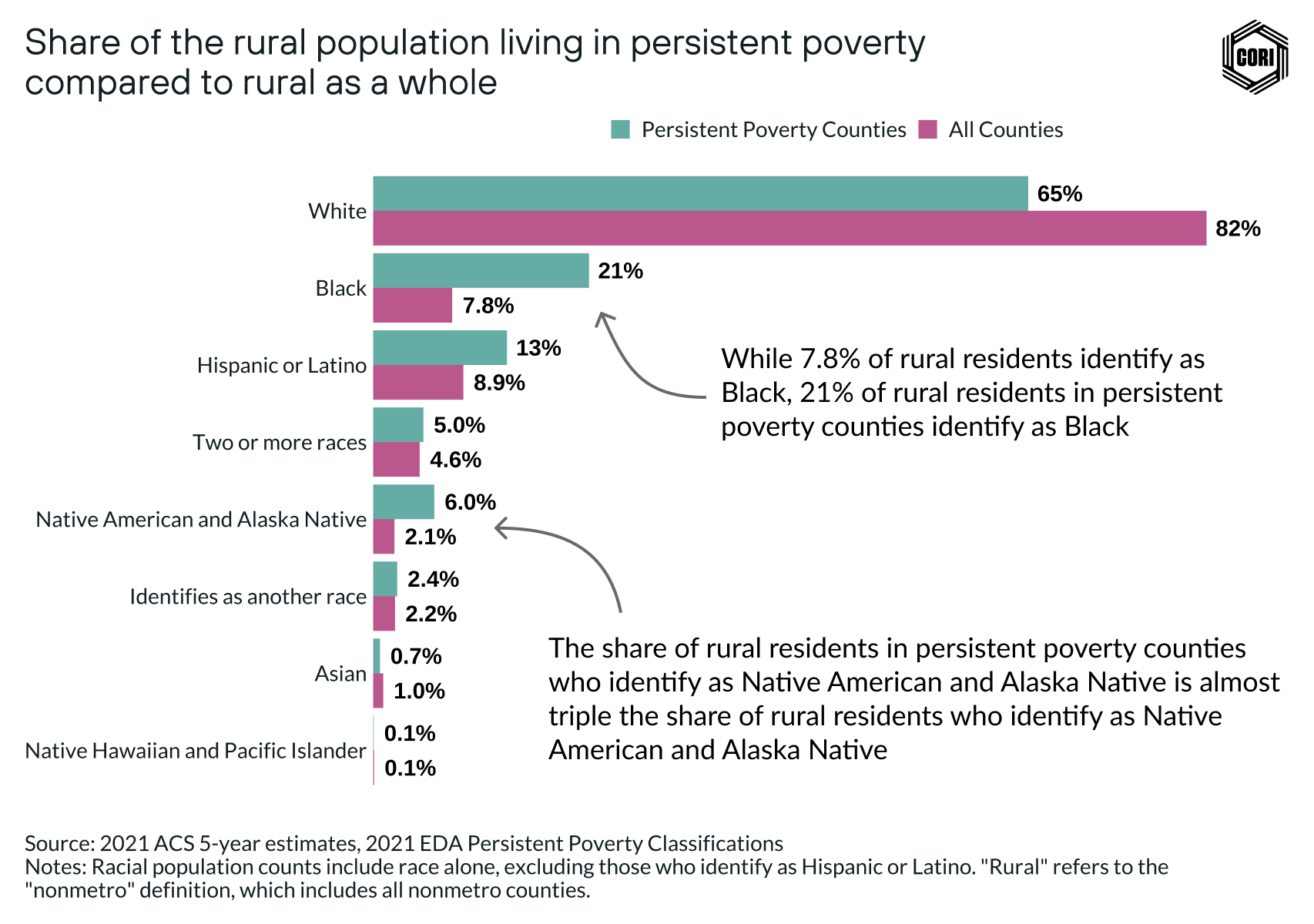The overlooked equity conversation: Rural America in the tech age
Without appropriate interventions, the concentration of poverty in rural regions may persist impacting future generations.
Since the 1970s, globalization and the shift toward the knowledge economy have coincided with growing regional inequality and a decline in the core industries in rural areas. It is important to acknowledge that while on a national level these industry shifts have provided some enormous economic benefits, these benefits are not uniformly distributed or felt.
In the third story in our Rural Aperture Project, a multi-story series funded by the Robert Wood Johnson Foundation’s Thrive Rural initiative, we seek to trace the history of this rural-urban divergence, and explain the importance of treating growing economic and digital divides as equity issues. Without appropriate interventions, the concentration of poverty in rural regions may persist impacting future generations.
The image of rural America as pastoral farmland and a hub for agricultural or manufacturing workers continues to persist today. It is a misconception that holds significant consequences.
In reality, agricultural labor constitutes a small and diminishing portion of the rural workforce. This stereotype obscures the true diversity of the rural experience and the ongoing developments in rural economies and communities.
Such invisibility not only deprives rural areas of essential infrastructure, investment, and opportunities but also denies the nation the innovation, insights, and diverse perspectives that these communities have to offer.
Challenging assumptions
Rural areas lagging behind urban areas is closely tied to the prevailing assumptions about their identity, potential, and role.
Initiatives like Partners for Rural Transformation’s “Everything Else” campaign emphasize the urgency of introducing fresh narratives rooted in rural voices and experiences.
Common misconceptions about rural areas persist, portraying them as predominantly white, agricultural lands characterized by traditional, leisurely small-town lifestyles. We cannot ignore rural areas in conversations about globalization or automation, nor should we ignore rural areas in conversations about equity: Within the rural workforce, workers of color are most vulnerable to automation, with 63% of jobs held by Black and Hispanic workers at risk of automation.
Persistent poverty is systemic and it is both race and place-based.
Beneath misconceptions lie implicit messages, reinforcing the belief that racial equity isn’t a pressing concern for rural places, that rural communities lack innovation, and investing in these areas yields poor returns due to their preference for tradition and a slower pace.
Misconceptions about rural areas effectively disconnect places, and the people who call them home, from vital economic opportunities. It’s crucial to recognize that these economic engines don’t just impact the financial well-being of rural communities but also profoundly influence their quality of life and physical health. Economic stability is a key social determinant of health, underscoring its importance in the broader discussion of well-being.
The interconnected realities
Often, we mistake the outcomes of disinvestment and neglect for the root causes of rural decline. For instance, the belief that innovation industries thrive in select cities solely due to their dynamism and ability to attract creative talent overlooks a more profound historical perspective.
The true drivers of rural decline lie in extractive and exploitative industries relying on low-wage (sometimes unpaid) labor and the isolation of rural communities, both economically and geographically. The rise of the knowledge economy further widened the gap between rural and nonrural places. But it is the choices we have made about technology that determined whether innovation led to inequitable growth (see, for example, Daron Acemoglu and Simon Johnson’s recent book).
We frequently compartmentalize economic and social realities, treating them as distinct domains. However, they are inherently intertwined. For example, previous research shows that when the economies of rural areas are struggling, they are more likely to experience hospital closures (a growing concern in rural areas).
Journalist Bethany McLean aptly asserts, “The economy is society, and economic well-being is crucial to societal well-being.” This extends beyond rural communities, affecting the entire nation. Growing geographic inequality and pervasive racial disparities underlie the class divisions we observe today, rendering our society increasingly fragile and fragmented.
A call for understanding
Addressing inequitable growth in America across geographies and marginalized groups requires a rural perspective.
In upcoming blog posts we will delve into the complexities of rural America’s challenges and potential described in more detail in the third story in our Rural Aperture Project. We explore the significance of the tech and innovation economy in rural development and the hurdles faced by these regions.
Join us on this enlightening journey as we challenge assumptions, debunk stereotypes, and advocate for a more equitable approach to economic development. The well-being of our entire nation is at stake, emphasizing the value and potential of rural America in shaping a brighter future for all.
Go deeper
Catch up on previous stories in the Rural Aperture Project, and sign up for our newsletter to ensure you don’t miss future stories and research about rural America.


